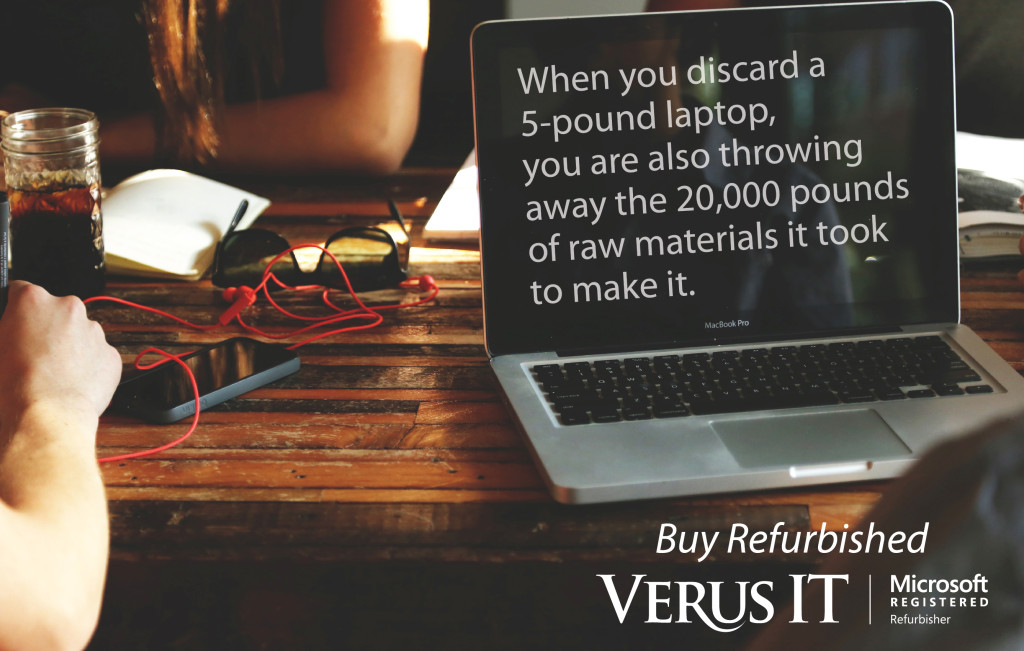Environmental Case for Refurbished IT Equipment
The Basis for the Environmental Benefits of Refurbished IT
The scientific basis for the environmental case for refurbished IT equipment is primarily from Dr. Eric Williams of Rochester Institute of Technology in his book, co-authored with Ruediger Kuehr, Computers and the Environment, Understanding and Managing Their Impacts.
In it, they find that the environmental cost to produce a computer and monitor is immense, especially for microprocessors. Producing the average 53-pound desktop computer and CRT monitor requires 530 pounds of fossil fuels, 50 pounds of chemicals, and 3,330 pounds of water.
According to Williams and Kuehr, adding additional life to computers saves 5 to 20 times more energy than recycling over the computer’s life cycle. It’s much better for the environment to extend the life of a computer for an extra two or three years than to buy a new one every three to four years.
The thing I found perhaps most interesting in the Williams and Kuehr findings is that 75 percent of PC energy consumption has already happened before a new computer is ever switched on. It is used up in the production phase. If this equipment has a six or seven year lifespan rather than three or four years, the environmental impact for even a fraction of the one billion plus computers now in use in the world will be immense.
To get a glimpse of how the number is growing as we speak, I like to look at the Worldometer computer page. We’re apparently on track to reach a two billion computer install base sometime in 2015. But I digress…
Half the Periodic Table in That PC or Mobile Phone
The green argument for electronics reuse goes beyond Williams and Kuehr, however. Paul Hawkin, in his book, Natural Capitalism, finds that the volume of material that goes into manufacturing a laptop is 4,000 to 1. When you discard a five-pound laptop you are also throwing away the 20,000 pounds of raw materials it took to make it.
The hundreds of raw materials that are needed to make electronics devices have an incredibly long and complex supply chain. I’m told that circuit boards are among the good with the longest supply chain of any manufactured item. The materials for them must come from mines and factories from all over the world. The University of Illinois Sustainable Electronics Initiative estimates that each PC or mobile phone contains about half the periodic table.
How Much Does Reuse Save?
The EPA’s Electronics Environmental Benefits Calculator shows environmental savings for computer recycling and reuse in terms of energy, materials, CO2, toxic emissions, and more. It finds that it is roughly 25 times more beneficial environmentally to reuse computers than to recycle them at 3 to 5 years of age.
Recent lifecycle assessment work by Eric Munsing of PE International has found that in more energy efficient devices like laptops, tablets and mobile phones, the environmental benefit of extending the useful life of these devices only increases. More energy and resources are expended in their manufacturing phase.
How Does Refurbished Equipment Stack Up?
The environmental case for electronics reuse aside, one question that always crops up is how refurbished IT equipment compares with new equipment in terms of performance. Most of us have been frustrated by using a three or four year old computer that takes forever to start up and do simple things like open a web page or send an email message. The main reason for this is that over time, software degrades or corrupts, developing interoperability conflicts and many other glitches.
A machine that is repaired, cleaned out, and has fresh software installed that is native to it pretty much runs as well as the day it was new. One important thing to know is that a four-year-old computer needs software that runs well on four-year-old equipment, and not the latest software versions.

